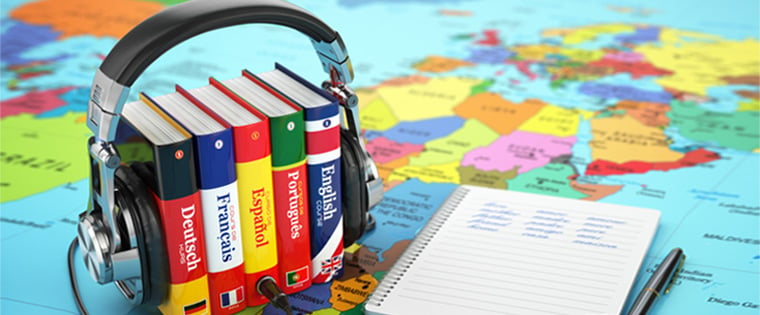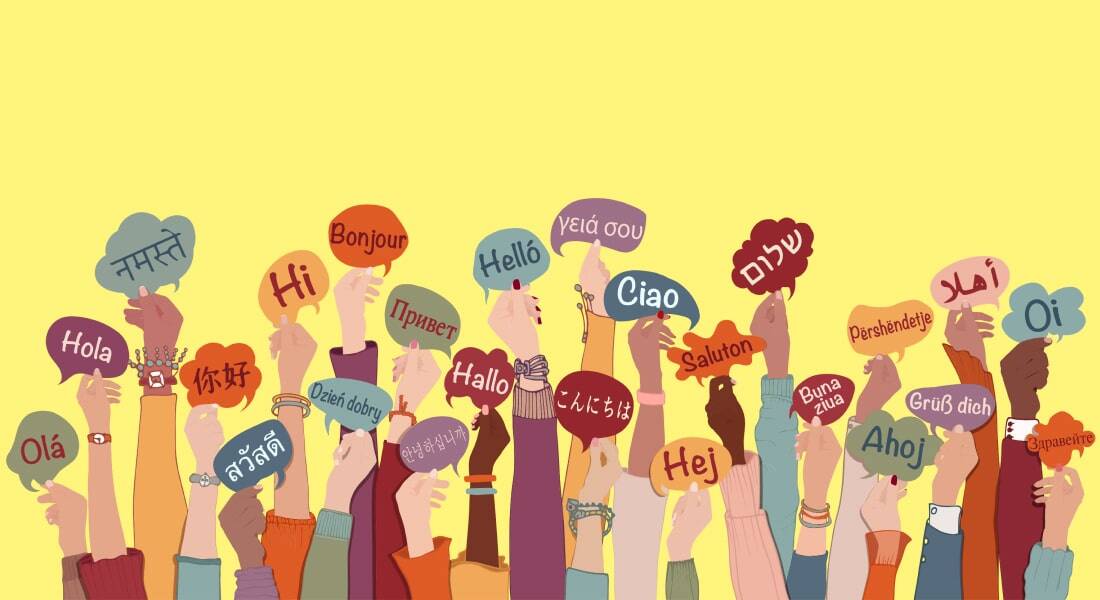Lost in E-learning Translation: Should Employees Double up as Translators?

An increasing number of organizations today have a global presence, and hence the need to train a global workforce. With the availability of translated and localized e-learning courses, it is not uncommon to see online training programs that are tailored to appeal to the native learners of a specific country. But all said and done, translating an e-learning course is not an easy task. Organizations need to make that important decision of whether to utilize someone in-house or outsource their e-learning translations.
Let me tell you a story.
A Story Unraveled
Here’s the story of an organization XYZ, a global healthcare company that regularly uses internal employees for e-learning translations. The company has been able to successfully rollout translated versions of its product training for salespeople in Spanish and French. “The decision is easy,” says the training manager of XYZ. “We have a multilingual workforce, so why look for a professional translation vendor.” With an abundance of in-house talent, it’s only right that the company makes use of resources who are talented and well-versed in the subject. This also turns out to be a way to reduce expenses incurred on outsourcing e-learning translations.
The organization makes use of pharmaceutical graduates who have joined the team as interns, to work on e-learning course translations for languages such as Spanish and French. Now, these are people who understand the content and are native speakers of these languages. The end product is well received by the respective sales teams in Spain and France.
A Twist in the Plot
Now, every story cannot be hunky-dory. Here comes the twist in the plot. The organization wants to rollout the same course into Chinese for its sales team in Beijing. Unfortunately, there is no one in the team who speaks and writes Chinese. Now, who will work on this translation? “No worries,” says the training manager. “We have Abigail from the accounting department.” Abigail has spent a couple of years in China, speaks eloquently in Chinese, and is hence considered the best resource to translate an e-learning course on product training from English to Chinese.
Abigail’s bright start to the day begins with a request from the training manager to work on an e-learning translation project that needs to be completed within the week. Does the translation process proceed smoothly or does it turn into a horror story? Here’s a recount of the story in Abigail’s words.
Day 1: Dealing with the Complexity of the Content
I work in the Accounts department and am familiar with the tasks and usage of accounting software in my department. How am I to translate the contraindications of a specific medicine into Chinese, when I do not understand the technicalities of this content? I also came across scenarios in the course which use idioms. While I do understand what they mean, I am not very sure if the Chinese translation would convey the same meaning.
Assessing the complexity and technicality of content is an important task to perform even before you begin e-learning translation. The source content which needs to be translated has to be:
- Clear and concise with carefully chosen words
- Written in discrete chunks
- Devoid of idioms and expressions
Idioms and expressions may not translate well in other languages. Also, when you are referring to names of medicines as in the case of product training for pharma sales representatives, keep in mind that the same medicine may be known by a different name in different countries. It is better to add a generic name that makes it easier to understand the drug’s function in the translated language.
Day 2: Following an Inconsistent Process
Here I am, trying to get my translation project off to a decent start. But where do I begin? I get started with translating the text that is onscreen and then I realize there’s more text in the narration script. And on some slides, it’s an image with a heading. Do I need to translate that too? Are there some guidelines to follow?
This is exactly how an internal employee would feel if he/she is assigned the task of translating e-learning courses, and is unaware of the right process to follow. When there is no set process defined for e-learning translation, your internal resource wouldn’t know where to begin. Also, the chances of errors are higher and the quality of translation is affected.
Day 3: Being Caught in the Terminology Trap
I manage to translate a couple of slides, but I am wondering what the tone of language should be. Should it be formal or informal? There are certain terms used in the English version of the course. There are acronyms and abbreviations. I don’t understand how to translate those. Even if I did, I think I might have used different translations for the same terminology. Help! Is there a translation style guide I can follow?
Following a style guide will take care of requirements such as the tone of voice, style, tone of language, and date and time formats. If there is a list of key terms and a preferred translation for those terms, the style guide can include that. This helps the internal employee working on the translation ensure that translated content is consistent and easy to read.
Day 4: Being Unaware of Cultural Nuances and Dialects
Do the scenarios in the course need to be localized to suit the target audience? Since this is a course on product training for the sales team, the English version of the course has scenarios showing the salesperson talking to a prospective client. The salesperson is shown addressing the prospective customer with his first name. The conversation is direct and to-the-point, and the salesperson is shown to be quite over-enthusiastic.
While this is perfectly fine in the US, I do not think that’s the case in China, where you refer to people with their formal title. A salesperson in China is expected to stay calm and reserved, and over enthusiasm is not received well in the Chinese culture. But I do not have the skill sets to rewrite this entire scenario to make it culturally appropriate for learners in China. Also, is there a dialect I’m supposed to follow when I translate the course?
When you need to translate a course into a different language, think through the scenarios and examples used in the source language. Are they culturally appropriate to your target audience? Are the visual elements appropriate? Even the colors used in the graphical user interface (GUI) of your course matter. Remember, some languages have different dialects as in the case of Chinese, where there are different dialects such as Mandarin, Wu, Min, and Yue.
Day 5: Sticking to Timelines for Completing Translations
It’s the end of the work week, and I am supposed to be completing work on the translation project today. I have been caught up trying to juggle this project along with my routine work. Now I realize I haven’t made much progress, and the translation looks quite shabby. Would my company have been better off outsourcing the translation?
When you make use of internal employees for translations, plan well ahead. Keep in mind that internal employees may not be able to adhere to strict deadlines for translation, especially when they have other job responsibilities to take care of. If your translation project is to be completed within tight deadlines, it is better to consider outsourcing the e-learning translation to expert vendors.
Translation is not an easy skill to master, and it takes years of practice for one to become an effective translator. You wouldn’t want your employees to go through a situation like Abigail, do you? Even if you plan to use an internal employee, ensure there is a robust plan in place. Get a proofreader who can validate the translated content.
A wrong translation can backfire and result in more expenses than you could probably imagine. As your business grows and your e-learning translation needs increase, perhaps it’s better to let people like Abigail do what they do best and leave the task to professional e-learning vendors who can deliver accurate and effective translation services.






